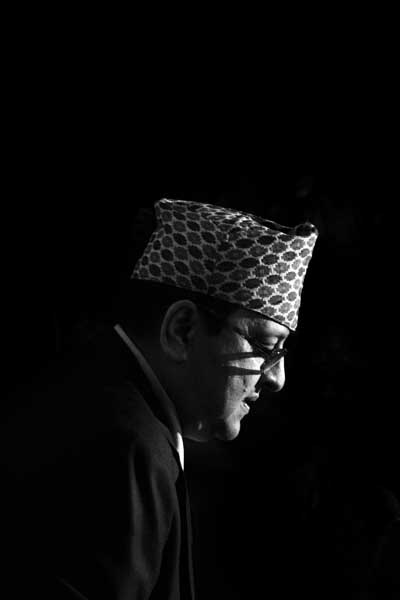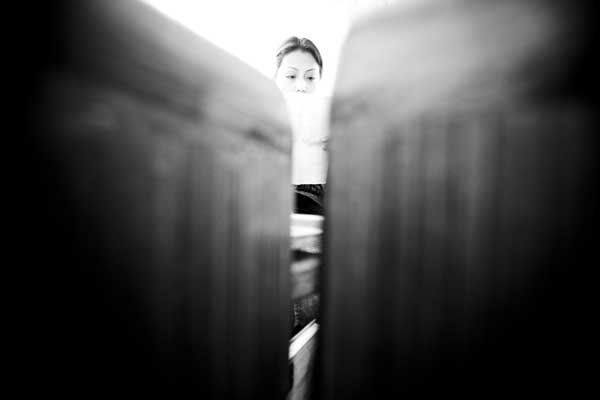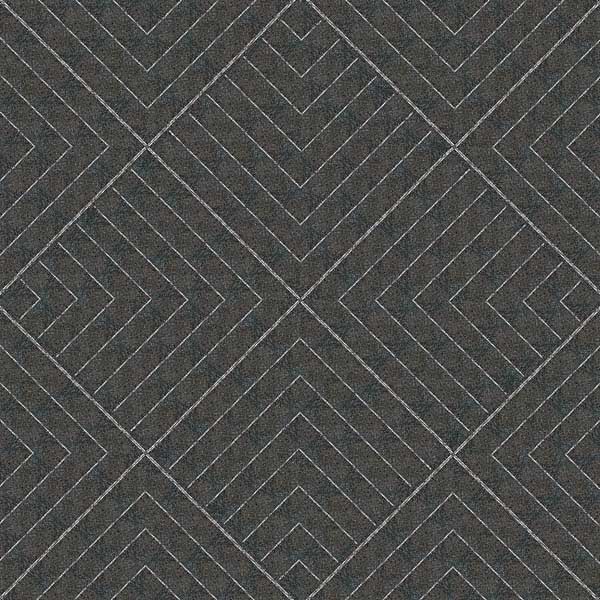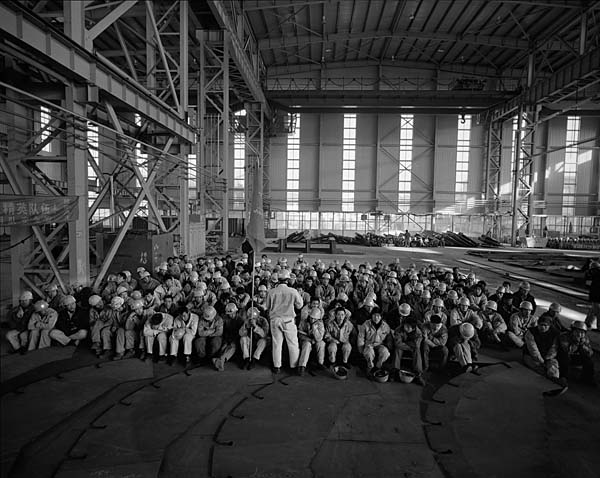National Geographic All Roads Photography Program
Group Show
Afghanistan, Argentina, Azerbaijan, Bangladesh

The National Geographic All Roads Film Project recognizes and supports talented indigenous and underrepresented minority-culture photographers from around the globe who are documenting their changing worlds. The program provides a forum for photographers to showcase their work to a global audience through festivals, exhibitions, panel discussions, and workshops. The awardees of this year?s program presents a wide-range of stories from their part of the globe. These photographers represent a new generation of storytellers ? each with powerful images and unique perspectives that reveal fascinating stories about their own cultures. This year?s awardees are Alejandro Chaskielberg (Argentina), Rena Effendi (Azerbaijan), Khaled Hasan (Bangladesh), and Farzana Wahidy (Afghanistan).

Alejandro Chaskielberg of Argentina photographs local and Paraguayan inhabitants in the islands near Buenos Aires, capturing the new culture that is forming there because of unemployment and immigration. Emerging Afghan photographer Farzana Wahidy offers a rare glimpse into the lives of Afghan women and the view of the world through a veil. Bangladeshi Khaled Hasan intimately captures the hard-working community of Jaflong?s stone crushing industry ? what these workers must do to survive is also destroying their environment. Azerbaijan?s Rena Effendi vividly captures the vanishing way of life in Khinaliq, a small village whose unique culture is threatened by the construction of luxurious ski resort nearby.


Long, Rugged Road to Republic
Sailendra Kharel
Nepal

In Nepal, more than 13,000 people have been killed and over 100,000 displaced since the communist rebels launched their armed struggle against the state in 1996. King Gyanendra’s direct rule ended in April 2006 after the rebels entered talks on how to end the civil war. A landmark peace deal was agreed upon in November, and in early 2007, the Maoists joined an interim government, finally entering mainstream politics after fighting a decade-long armed conflict.

April 10, 2008, was a historic day for the people of Nepal. On this day, the Nepali people were able to vote, for the first time, for a constituent assembly and to decide their own fate, the fate of the monarchy and to write their own constitution.

The CPN-Maoist political party won the highest number of seats, and became the largest political party of Nepal. The country has been declared as a Republic, doing away with the 239-year-old monarchy of the Shah dynasty.
I?m a Woman
Sam Kang Li
Singapore
“I have every right to love whomever I want,” Alex Chamling tells me. The 27-year-old realised he was a homosexual in his teen years, but only began accepting his sexuality a few years back. “As long as I don’t affect others in a negative way or do bad to others, loving someone of the same sex isn’t a sin,” he concludes.

Chamling is part of the LGBTI (lesbian, gay, bisexual, transgender and intersex) community in Nepal, which consists of no less than 900,000 people, not including those who are not yet “out of the closet”. For the past decade, Nepal has been striving for political freedom, but along the fringes the LGBTI community has been fighting for individual freedom. In this country, 80 percent of its citizens live in villages, and, having been rejected in their own communities, LGBTI people flee to Kathmandu to search for acceptance and jobs.

But it has not been easy even in the city, and the Blue Diamond Society was set up to provide awareness to the public as well as assist LGBTI in their personal development. More significantly, the closely-knit organization gives LGBTI people a true liberty to be just as they are ? gay and happy.

Photographing them has enabled me to enter their otherwise secretive lives. They are often humourous, fun loving and creatively talented. Yet, upon leaving their own gates and entering public space, they walk into a perplexing prison of stares and intimidating treatment. These perpetuate the community’s withdrawal and they shy themselves away from the crowd. In capturing visual slices of their energetic inner lives, there is a hope of breaking down the fences of their tunnels — to cast a light of release that will eventually allow the community a genuine right to love freely, and to be free.
Markings
Camille Zakharia
Lebanon
Shackled by constraints imposed by society, family, tradition, religion, the government and a myriad other institutions, I have fought for my right to remain free ? a freedom of my mind which I manifest in my art. I have the freedom to create from the most banal of materials, photos of white paint on black asphalt, endless combinations of patterns, mandalas, quilts and Middle Eastern rugs.

As Susan Sontag writes, ?A photograph passes for incontrovertible truth that a given thing happened. The picture may distort; but there is always a presumption that something exists, or did exist, which is like what?s in the picture.?

It is from this presumption that I seek emancipation in my series ?Markings?. Through the use of montage, I have rebelled against the photo medium itself, challenging its already tenuous reputation to represent reality as it is, and in so doing, I have liberated myself from the traditional photo process.

To challenge those constraints, I have used photos of innocuous paint on black asphalt in different combinations to create a geometric pattern that bears no resemblance to the original image.
?Lost loved ones: Portraits from the Deep South into the Red Zone?
Masaru Goto
Thailand
In Thailand, close to the Malaysian border, 80 percent of the population which lives in three Deep South provinces ? Pattani, Narathiwat and Yala ? are ethnic Malay Muslims. A long time ago, the Sultanate of Pattani, a Muslim kingdom, ruled this region, but the area was annexed by the Thai government in the early 20th century.

In January 2004, Muslim separatist groups calling for independence from the central Buddhist government launched attacks, setting off bombs in the middle of the city and killing Buddhist villagers. The Thai government enacted an Emergency Decree and brought in troops. Young Muslim men have been ?blacklisted? by the authorities and assumed guilty with no reasons given. An unknown number of people have ?disappeared?, but the local Muslims received no justice, and hence reinforced local Muslims? support for the separatist groups.

Now, most rural Muslim groups in the south where support for the separatist movement is strong are classified as ?red zones?. The government has also reinforced troops located in the Deep South.
I have been documenting the people in the south of Thailand since early 2004. I traveled through rural armed Buddhist villages, as well as Muslim ones which have been classified as ?red zones?.

Since 2004, more than 3,000 people have been killed and over 7,000 injured by this conflict. The number of widows have risen to 1,200, and 1,900 children have been orphaned. Violence in the region has affected many, especially those who have lost their family members and loved ones.
I wish to show how the violence in this region has increased to such an extent that it has affected the lives of all who live here ? both Muslims and Buddhists.
Freedom from Poverty
Group Exhibition
China
This exhibition introduces 10 new photographers based in China who explore stories related to China?s move out of poverty. The Chinese have lifted 400 million of their own people out of destitution over the past two decades. Yet, there have been no elections and the press is still under government control. This group exhibition considers the concept of individual freedom from poverty, and questions the global north?s assertion that political democracy is the most effective means to achieve it.

The concept for this exhibition is based around “intimacy? and all the photographers chosen are either Chinese or have lived in the region for some time. Subjects cover both the poorest communities in their struggle to move to follow former premier Deng Xiaoping?s dictum ?poverty is not socialism, to be rich is glorious? as well as communities who are enjoying China?s new wealth. Amongst these essays is Chinese photographer Gai Yu Qiang?s portraits of Dalian Policemen in their homes. This very intimate look at a sector of society, known outside of Chinese borders only for their brutality, unveils a very different image and plays on the concept of ?freedom?. The essay, along with others featured in this group exhibition, demonstrate a far more complex society than is normally portrayed with an undercurrent theme of a simple human struggle for a better life.

Now this area become a big industry place, and nearly all the fishman become workers. they can earn 500 US Dollar a month.? Jiang Zhenging

Liu Junyi's living space. ? Gai Yu Qiang Now
Michael Shaowanasai
Thailand
To me, history and the present are literally walking together hand in hand. The future is not yet known to us, but we can shape it with the knowledge of the past, along with the conscious knowledge of the very moment we are in. Photography provides the artist the liberty to produce the likeness of our being, to move one step closer to reality as we are able to comprehend it.

? Michael Shaowanasai
After a while, I had abandoned the handling of the technical aspects of making images. I now concentrate more on what will be “in” the pictures. It is akin to writing a story, a poem, scripts or letters. I hope that the readers, or viewers, will be eager to read or “look” at more of what I am going to say. Not all will agree with me, or want to listen to me, but being an artist, one of our duties is to “speak” out about what we are thinking. Eventually, someone will come along, and reach out his or her hand to touch you and say, “Thank you”, or, simply slap you in the face.
That is a delicate balance that I am enduring, and I love every minute of it.

Excelent!!!
Nice!Mainly lost father & g.mother